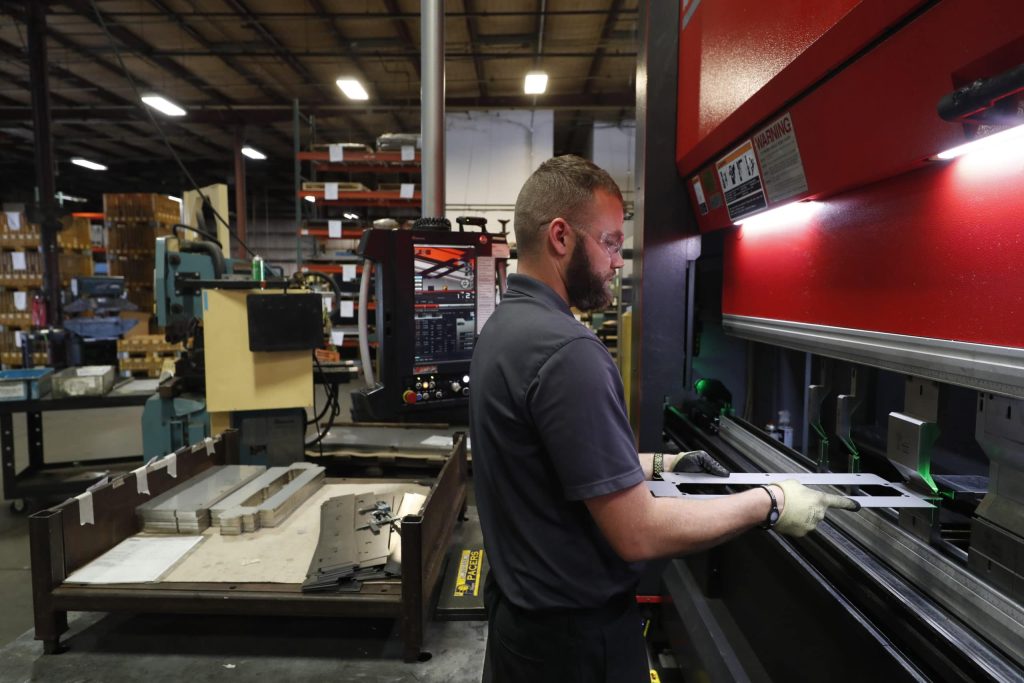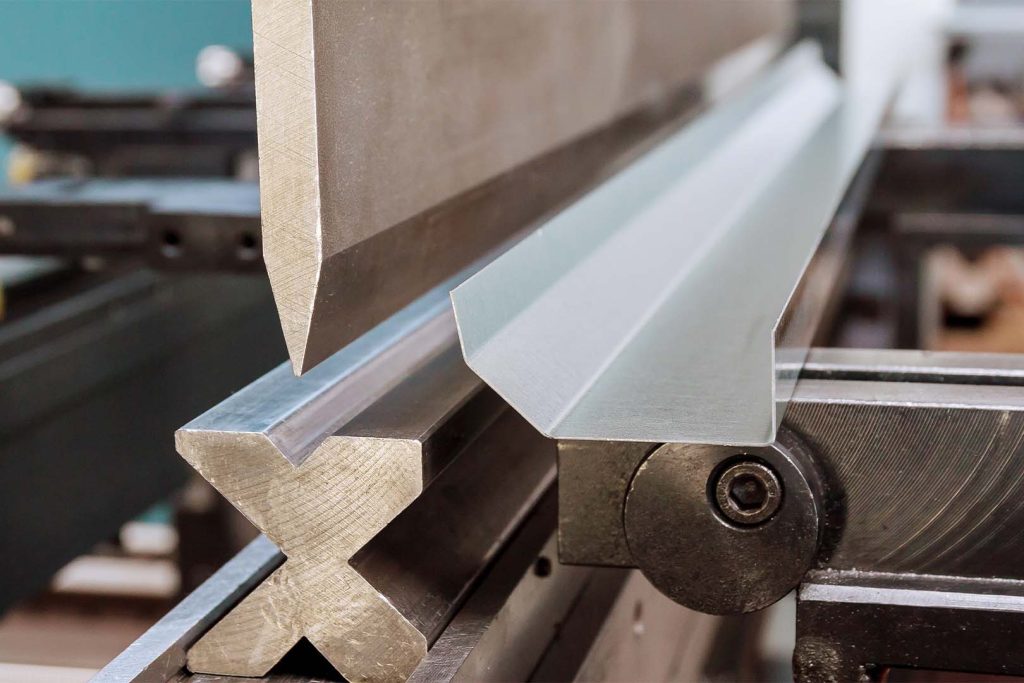Table of Contents
Are you looking for a way to bend sheet metal in Solidworks? Look no further! In this article, we’ll guide you through the process step by step, so you can create the perfect bend every time.
Sheet metal bending is a fundamental skill in Solidworks, and it’s essential for creating accurate and functional sheet metal parts. Whether you’re a beginner or an experienced Solidworks user, we’ve got you covered with all the tips and tricks you’ll need to get the job done right. So, let’s get started!
- Select the sheet metal part in Solidworks.
- Go to the sheet metal tab and select the base flange tool.
- Enter the parameters for the sheet metal, including thickness and bend radius.
- Select the bend tool and choose the location for the bend.
- Adjust the bend angle and direction as needed.
- Repeat the process for any additional bends needed.
How to Bend Sheet Metal in Solidworks: A Comprehensive Guide
When it comes to designing sheet metal components, Solidworks is undoubtedly one of the most popular software in the industry. With its advanced capabilities and user-friendly interface, it has become a go-to tool for engineers and designers worldwide. However, bending sheet metal in Solidworks can be a bit challenging, especially for beginners. In this article, we will guide you through the process of bending sheet metal in Solidworks step by step.
Step 1: Create a Sheet Metal Part
The first step in bending sheet metal in Solidworks is creating a part. To do so, open a new part document and select the “Sheet Metal” option from the “Part Type” drop-down menu. Next, choose the appropriate sheet metal material and thickness from the “Sheet Metal” tab. Once you have selected the material, click “OK” to create the part.
Benefits of Creating a Sheet Metal Part:
- Efficient use of material
- Accurate simulation of the final product
- Easy modification and customization
Step 2: Create a Sketch of the Part
The next step is to create a sketch of the part you want to bend. To do so, select the “Sketch” option from the toolbar and draw the required shape using lines, arcs, and circles. Make sure that the sketch is fully defined and closed.
Benefits of Creating a Sketch:
- Clear visualization of the part
- Easy modification and editing
- Accurate simulation of bending process
Step 3: Add Bend Features
Once you have created the sketch, it’s time to add bend features. To do so, select the “Base Flange/Tab” option from the “Sheet Metal” tab and click on the sketch. Next, specify the bend parameters such as angle, radius, and bend direction. You can also add multiple bends to create complex shapes.
Benefits of Adding Bend Features:
- Efficient use of material
- Accurate simulation of the final product
- Easy modification and customization
Step 4: Flatten the Part
After adding the bend features, it’s time to flatten the part. To do so, select the “Flatten” option from the “Sheet Metal” tab. This will create a flattened version of the part, which is essential for accurate manufacturing.
Benefits of Flattening the Part:
- Accurate estimation of material requirements
- Easy creation of manufacturing drawings
- Accurate simulation of the final product
Step 5: Create a Bend Table
To accurately simulate the bending process, you need to create a bend table. This table contains information about the material, thickness, bend radius, and bend angle. To create a bend table, select the “Bend Allowance” option from the “Sheet Metal” tab and fill in the required information.
Benefits of Creating a Bend Table:
- Accurate simulation of the bending process
- Easy modification and customization
- Efficient use of material
Step 6: Use the Bend Tool
After creating the bend table, you can use the bend tool to simulate the bending process. To do so, select the “Bend” option from the “Sheet Metal” tab and specify the bend angle, bend radius, and bend direction. You can also preview the bent part to ensure that it meets your requirements.
Benefits of Using the Bend Tool:
- Accurate simulation of the bending process
- Easy modification and customization
- Efficient use of material
Step 7: Add Relief Cuts
To prevent the sheet metal from deforming during the bending process, you may need to add relief cuts. These cuts help to reduce the stress on the material and prevent it from tearing. To add relief cuts, select the “Cut-Extrude” option from the toolbar and draw the required shape.
Benefits of Adding Relief Cuts:
- Prevention of material deformation
- Accurate simulation of the final product
- Easy modification and customization
Step 8: Check for Interferences
Before finalizing the design, you need to check for interferences. Interferences occur when two or more parts occupy the same space, which can lead to manufacturing defects. To check for interferences, select the “Interference Detection” option from the toolbar and run the analysis.
Benefits of Checking for Interferences:
- Prevention of manufacturing defects
- Accurate simulation of the final product
- Easy modification and customization
Step 9: Export the Design
Once you have completed the design, it’s time to export it for manufacturing. To do so, select the “Save As” option from the toolbar and choose the appropriate file format. You can also create manufacturing drawings to specify the required tolerances and dimensions.
Benefits of Exporting the Design:
- Efficient communication with manufacturers
- Accurate manufacturing of the final product
- Easy modification and customization
Step 10: Use Solidworks Simulation
To ensure that the design meets your requirements, you can use Solidworks Simulation. This tool allows you to simulate the performance of the product under various conditions, such as temperature, pressure, and vibration. You can also optimize the design based on the simulation results.
Benefits of Using Solidworks Simulation:
- Accurate simulation of the product performance
- Optimization of the design for maximum efficiency
- Prevention of manufacturing defects
In conclusion, bending sheet metal in Solidworks may seem daunting at first, but with the right tools and techniques, it can be a straightforward process. By following the steps outlined in this article, you can create accurate and efficient sheet metal designs that meet your requirements. So, go ahead and try it out for yourself!
Frequently Asked Questions
Here are some common questions and answers about how to bend sheet metal in Solidworks.
What is Sheet Metal Bending in Solidworks?
Sheet metal bending is a process of bending a flat sheet of metal into a desired shape. Solidworks is a computer-aided design (CAD) software that can be used to design and simulate sheet metal bending.
To bend sheet metal in Solidworks, you need to create a sheet metal part and use the sheet metal tools to create the bend. You can also use the simulation tools in Solidworks to test the strength of the sheet metal part after it has been bent.
What are the Benefits of Sheet Metal Bending in Solidworks?
There are many benefits of using Solidworks for sheet metal bending. Firstly, it is a fast and efficient way to create sheet metal parts. Secondly, Solidworks allows you to easily modify the design of the sheet metal part and simulate the bending process.
Additionally, using Solidworks for sheet metal bending can help you avoid mistakes and errors that can occur during the manual bending process. This can save time and money in the long run.
What are the Tools in Solidworks for Sheet Metal Bending?
Solidworks has a range of tools that can be used for sheet metal bending. These include the base flange tool, the edge flange tool, the hem tool, the jog tool, and the lofted bend tool.
You can also use the simulation tools in Solidworks to test the strength and durability of the sheet metal part after it has been bent. This can help you identify any potential issues and make modifications to the design before manufacturing.
How to Create a Bend in Solidworks?
To create a bend in Solidworks, you first need to select the sheet metal part that you want to bend. Then, you can use the sheet metal tools to create the bend.
You can specify the angle and radius of the bend, as well as the direction of the bend. Once you have created the bend, you can use the simulation tools in Solidworks to test the strength and durability of the sheet metal part.
What are the Best Practices for Sheet Metal Bending in Solidworks?
There are several best practices that you should follow when bending sheet metal in Solidworks. Firstly, you should ensure that the sheet metal part is properly designed and that the bending process is simulated before manufacturing.
You should also use the correct tools and techniques for the job, and follow the manufacturer’s instructions for bending the sheet metal. Additionally, you should always wear protective gear when working with sheet metal to avoid injury.
In conclusion, bending sheet metal in Solidworks can be a challenging task, but with the right techniques and knowledge, it can be easily accomplished. By following the steps outlined in this tutorial, you can create accurate and high-quality sheet metal parts that meet your design requirements.
One important thing to keep in mind when working with sheet metal in Solidworks is to always double-check your measurements and angles. Any slight mistake can result in a flawed part that may not fit into your overall design.
Lastly, don’t be afraid to experiment and try out different techniques when bending sheet metal. With practice and experience, you can become a master at creating complex sheet metal parts that meet your specific needs. So, get started today and see what you can create using Solidworks!
Request a quote today!
[contact-form-7 id="1578" title="Contact form"]
Please compress the file into a ZIP or RAR file before uploading. Alternatively, send through your RFQ by email.
enquires@unitymanufacture.com




